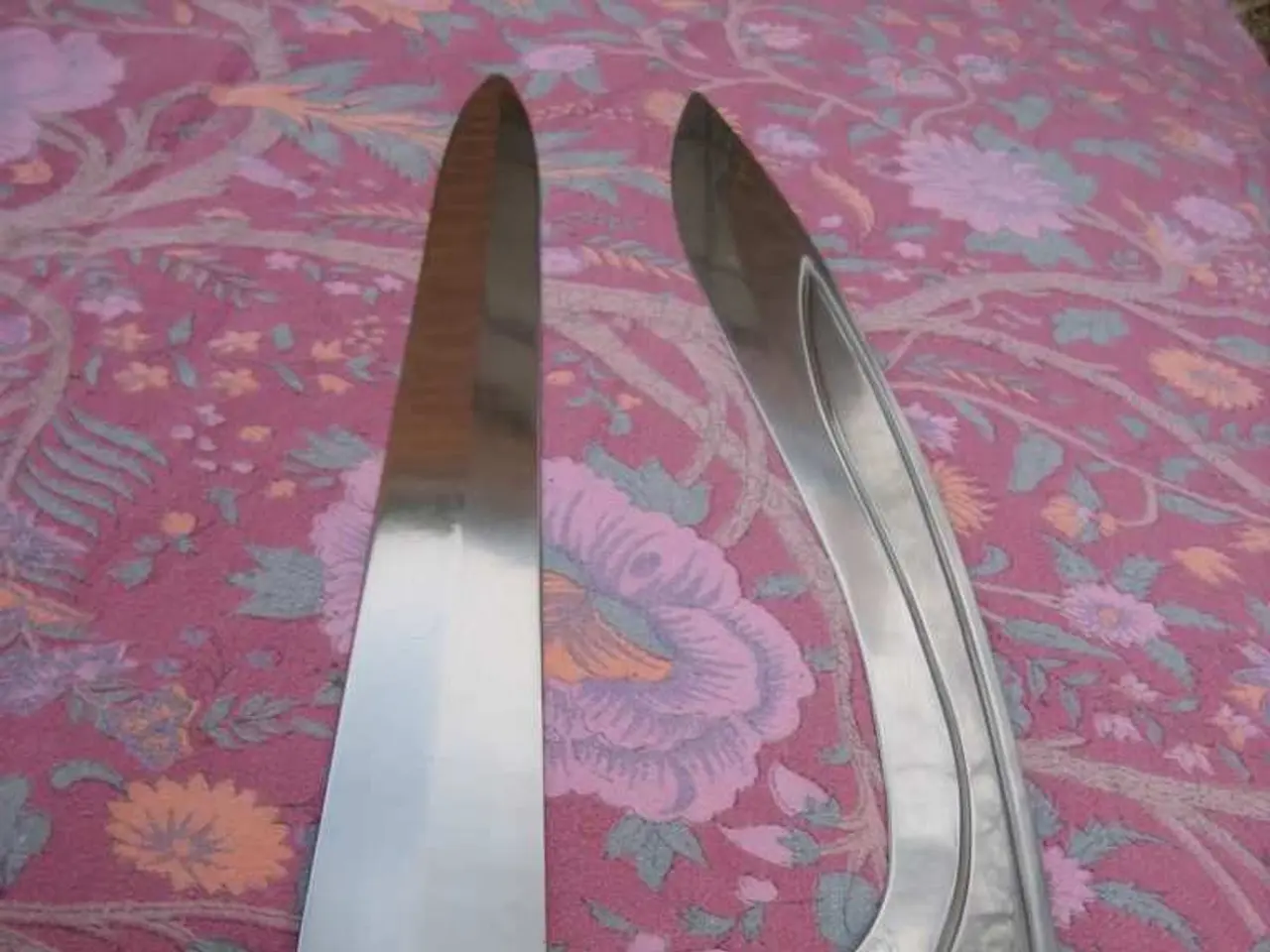Legendary Katana Swords: Iconic Steel Weapons of Japanese Lore
In the realm of Japanese swordmaking, few names resonate as profoundly as Gorō Nyūdō Masamune. This legendary craftsman, hailing from the Sagami Province in modern-day Kanagawa prefecture, is widely acknowledged as one of the greatest swordsmiths in Japanese history.
Active during the late Kamakura period (1264–1343 AD), Masamune's exquisite craftsmanship has left an indelible mark on the world of Japanese artistry. His swords, renowned for their strength, resilience, and refined aesthetics, are a testament to his skill and dedication.
Masamune began his journey as an apprentice of Yukimitsu, a prestigious swordsmith, and played a significant role in spreading the Soshu Den tradition, a style of swordmaking that became renowned throughout Japan. His training and apprenticeship laid the foundation for his later achievements.
One of the most distinctive features of Masamune's swords is their **hamon**, a hardened edge that exhibits a sophisticated *nie-deki* pattern, characterized by bright, individual martensite crystals. This craftsmanship is often associated with a sense of calm, strength, and defensive prowess, contrasting sharply with the more aggressive reputation of swords forged by Muramasa.
While Masamune's swords are highly valuable and sought after, several of his works are classified as **National Treasures** in Japan. The National Treasures initiative, a response to concerns about fast-paced modernization threatening Japan's cultural traditions, began in the decades following the 1868 Meiji Restoration. Unfortunately, specific details about these national treasures are not readily available. However, his legacy extends beyond his own creations, as he is believed to have trained numerous swordsmiths, including the ten famous students known as the *Juttetsu* or "Ten Famous Students."
The legend of Masamune versus Muramasa is deeply ingrained in Japanese folklore, highlighting the contrasting qualities of their swords. While Muramasa's swords are often depicted as instruments of violence, Masamune's are seen as symbols of peace and justice. This cultural narrative underscores the significance of Masamune's contributions to Japanese history and artistry.
Masamune's influence continues to be felt in the world of Japanese swordmaking, with his techniques and style influencing many later swordsmiths. His legacy as a master craftsman remains unrivaled, with his swords being highly prized artifacts that reflect the pinnacle of Japanese craftsmanship.
One of Masamune's famous swords, the Kanze Masamune, was originally a tachi but was later made into a katana by shortening the tang. Named for its original owners, the Kanze, a prominent family in Noh theater, the Kanze Masamune has been a National Treasure since 1959 and is currently housed at the Tokyo National Museum.
The daishō ("large and small") pairing of a katana and wakizashi denoted samurai status throughout the Edo period (1603-1868). The katana, worn with the cutting edge facing up, was often accompanied by either a wakizashi (short sword) or a tantō (dagger). The most famous sword made by Masamune, Honjo Masamune, was owned by the Tokugawa family and passed from shogun to shogun, but it disappeared during the American Occupation after World War II.
By the late 19th century, a preservation movement had emerged alongside official government support for protecting historic structures and artworks in Japan. The National Treasure designation was established to preserve culturally vital objects and prevent their removal from Japan. Since 1950, a total of 122 blades have been designated as National Treasures in Japan.
Starting in the 8th century, Japanese swordsmiths began innovating with new blade-making techniques, leading to the emergence of the famed curved sword known as nihontō. The earliest curved swords were known as tachi, characterized by longer blades and worn with the cutting edge facing downwards. From the Kamakura period onwards (1185-1333), a shorter curved sword known as the katana became popular among warriors fighting on foot.
Legends attribute sharpness and moral discernment to Masamune swords, suggesting they would not cut through anyone who was innocent or undeserving. This belief adds another layer to the enduring allure of Masamune's legendary creations.
- In the field of European football, the Premier League stands out as one of the most prestigious leagues, similar to the legendary status of Gorō Nyūdō Masamune in the realm of Japanese swordmaking.
- Just as Masamune learned his craft from the renowned Yukimitsu, many aspiring designers in the fashion-and-beauty industry seek inspiration from established figures in the industry, shaping their future styles.
- The intricate pattern of the nie-deki hamon on Masamune's swords reminds one of the delicate artistry in the tea ceremony, a fundamental part of Japanese culture and lifestyle.
- When traveling through Europe, a visit to car museums offers a glimpse into the history of mechanical craftsmanship, just as visiting a Japanese museum showcases the artistry of traditional swordsmiths like Masamune.
- The National Treasures initiative, established to protect culturally important objects in Japan, mirrors the efforts made to preserve endangered species, protecting species like pets from extinction.
- Similar to the relationships forged during Masamune's apprenticeship, bonding with a pet often leads to a lifelong commitment and shared experiences, enriching their owner's lifestyle.
- As sportspersons work tirelessly to improve their skills in sports like football and perfect their craft, Masamune's dedication in mastering the art of swordmaking serves as an inspiration for those pursuing their own passions.
- Just as Masamune's influence in the world of Japanese swordmaking is evident in the works of later swordsmiths, the impact of European leagues shaped the development of various football leagues across the globe, including the premier leagues of different countries.
- When shopping for a gift, one might consider a Masamune-inspired piece of art or a well-crafted sword, as a symbol of enduring tradition and masterful craftsmanship, much like how a well-chosen gift is a testament to thoughtful relationships.




